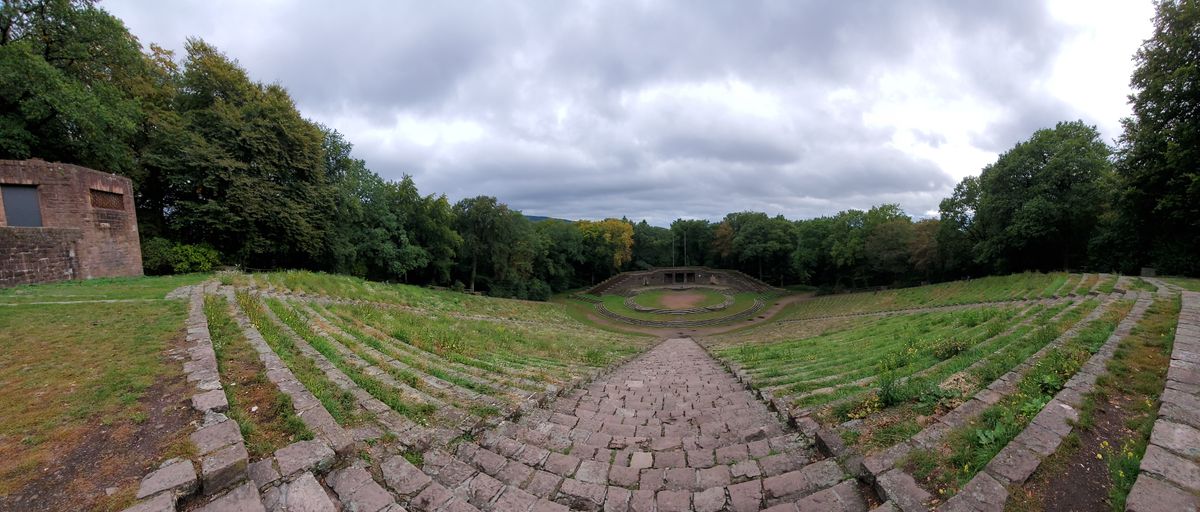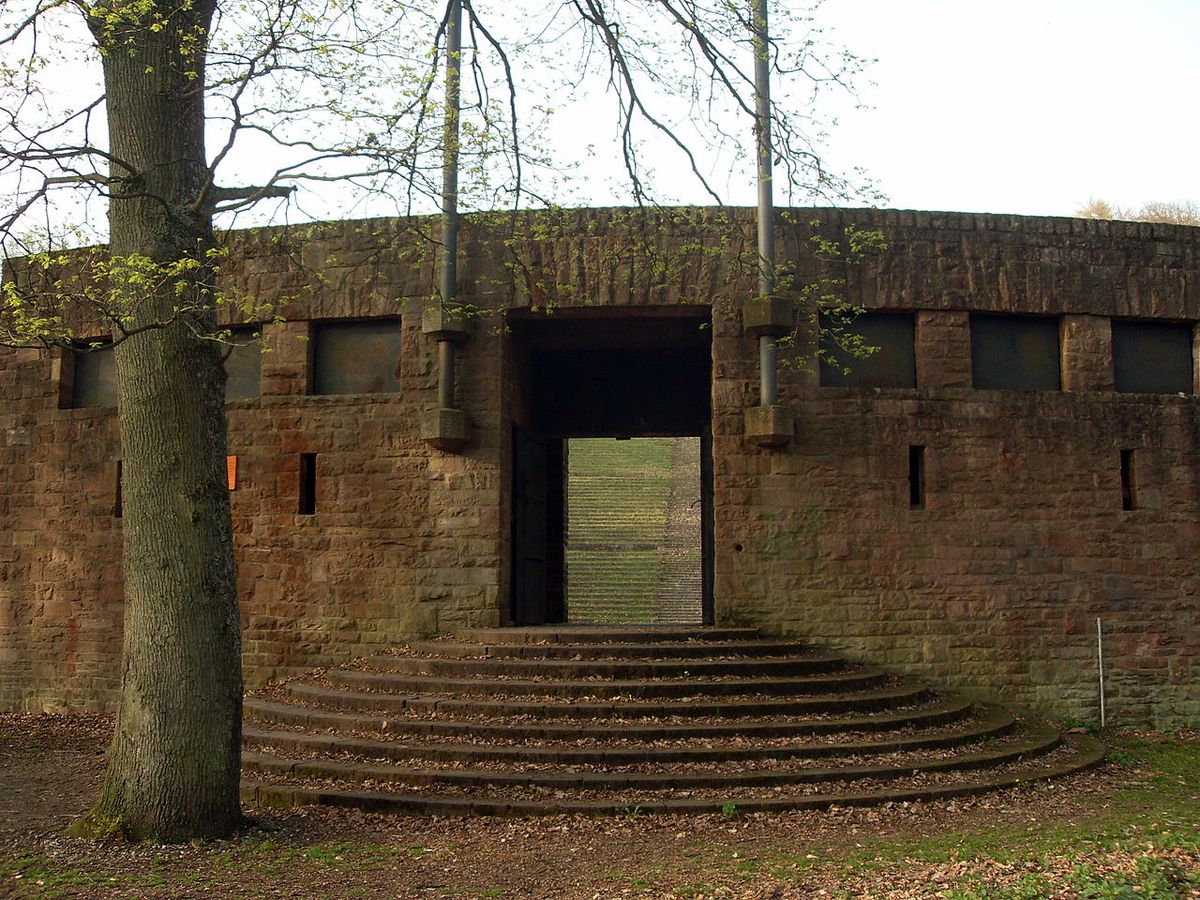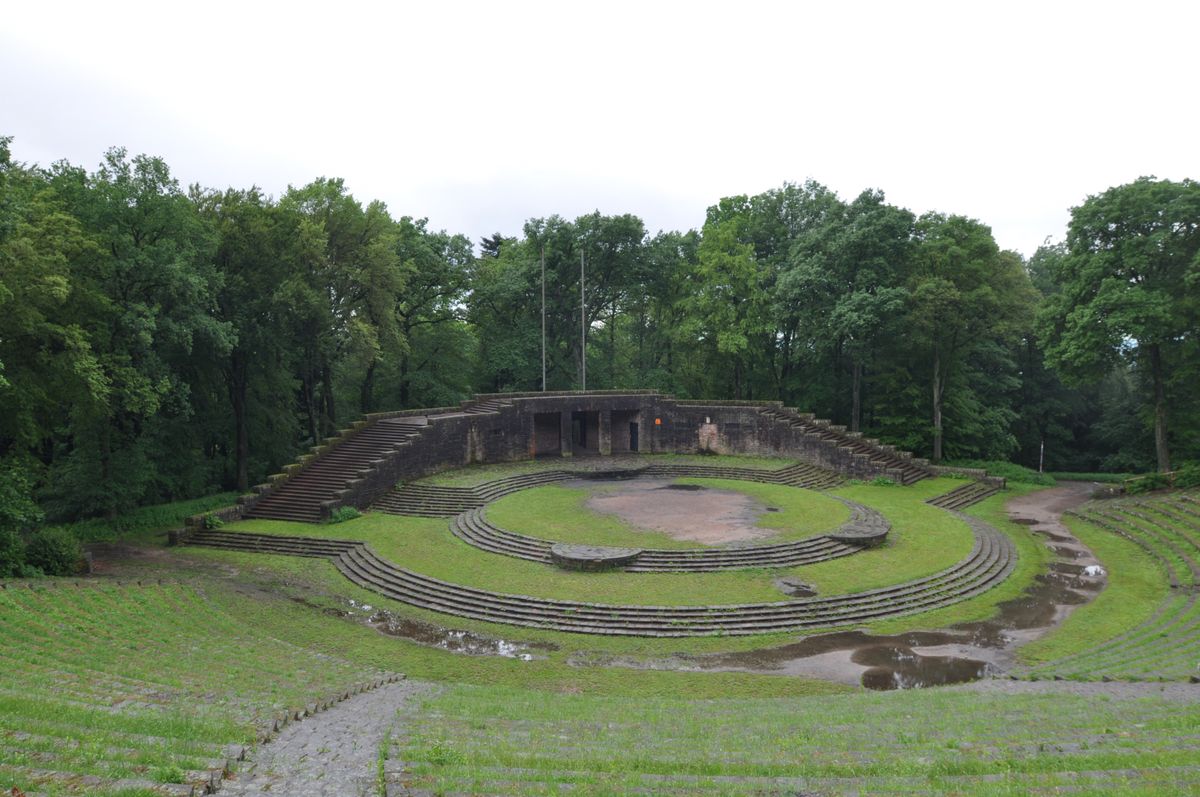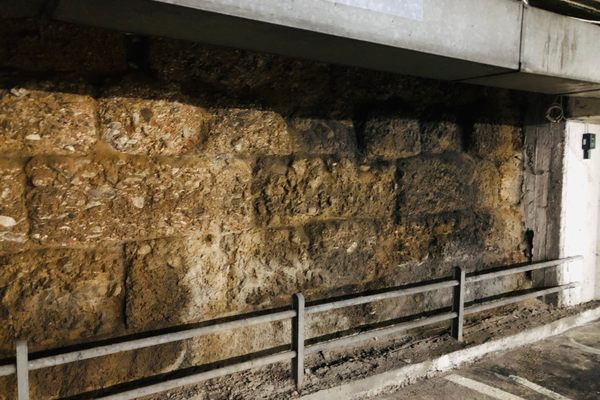About
After World War I, the Nazi Party spread across Germany. Fueled by post-war unrest and Hitler’s charismatic leadership, thousands joined the Nazis, who blamed the Jews, Communists, liberals, and pacifists and promised to restore Germany’s standing in the world.
In 1933, as part of his mission to indoctrinate the German population Nazi Minister of Propaganda Joseph Goebbels started Thingspiel. This was a movement to build huge outdoor settings where thousands of people could gather for propaganda presentations in specially constructed amphitheaters called Thingplatz or Thingstatte.
Thingstatte were often incorporated bodies of water, ruins, hills of historical importance, rocks, and trees. More than 1,000 were planned, but the movement never gained popularity with the people of Germany and only about 45 of them were completed. The first was built in 1934 and the last in 1936.
The Thingstatte in Heidelberg was started in 1934 and finished the following year. Situated on the Heiligenberg (Holy Mountain), the amphitheater covers 25 meters of sloping land and overlooks the city. Designed by the architect H. Alker, who worked for the Reich Labor Service, the Heidelberg Thingstatte features two hexagonal towers constructed to hold flags, lighting, and sound. On the opening day, 20,000 people turned out to hear Goebbels himself. After the Thingstatte fell out of favor, this site was turned into a public park and remains one to this day.
The mountain (and area around Heidelberg generally) has drawn humans for millennia, hence why the Nazis were so interested. In the last centuries B.C., there was a huge fortified Celtic settlement on the mountain. As the Romans conquered the area, they built several small temples on the summit of the mountain over preexisting Celtic ruins. The remains of the Roman temples were, in turn, integrated into a monastery, the ruins of which are located above the Thingstatte and worth visiting while you're up there. Another worthwhile curiosity you'll pass on your way up to the Thingstatte is the Heidenloch, or Heathen Hole, which consists of a rock-cut chute that measures between 10 by 15 feet and 180 feet deep. While it is certain that this chute dates at least to the Roman period, its exact purpose remains a mystery.
Related Tags
Know Before You Go
Take Bus 33 to the Park, but only on the weekends. Weekdays it drops off at the bottom of the hill and you have to walk 1.7 miles to the Park.
Community Contributors
Added By
Published
November 3, 2010




















































